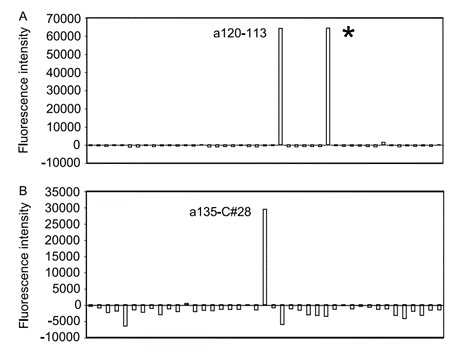DNA microarrays are almost made up of molecules that have already been localized or fabricated on glass microscope slides or silicon chips, such as cDNA and nucleotide sequences. It can simultaneously display the expression of thousands of genes at a time. Thus, it is a powerful tool for genetic analysis. It has the capacity to apply many thousands of nucleotides in an ordered array to a surface, thus allowing the parallel interrogation of thousands of different sequences at once. It is currently being applied in the broad areas of biomedical, pharmacological, and genomic research, as well as diagnosis, food safety, and quality.
Lifeasible provides services to customers worldwide covering the detection of plant nematodes by DNA microarrays. We develop an advanced platform equipped with advanced instruments and professional staff for plant science with a high standard. We customize featured services according to the customers' demand.
 Fig.1 Representative examples of microarray hybridization results. (François C, et al., 2006)
Fig.1 Representative examples of microarray hybridization results. (François C, et al., 2006)
Lifeasible offers services covering the functional detection of plant nematodes to meet your research demands. With years of experience in plant science, our professional platforms can help our clients solve various difficulties. If you are interested in our services or have any questions, please feel free to contact us or make an online inquiry.
Reference
Lifeasible has established a one-stop service platform for plants. In addition to obtaining customized solutions for plant genetic engineering, customers can also conduct follow-up analysis and research on plants through our analysis platform. The analytical services we provide include but are not limited to the following:
STU-CRISPR System Improves Plant Genome Editing Efficiency
April 19, 2024
Application of Exosomes in Facial Beauty
April 12, 2024